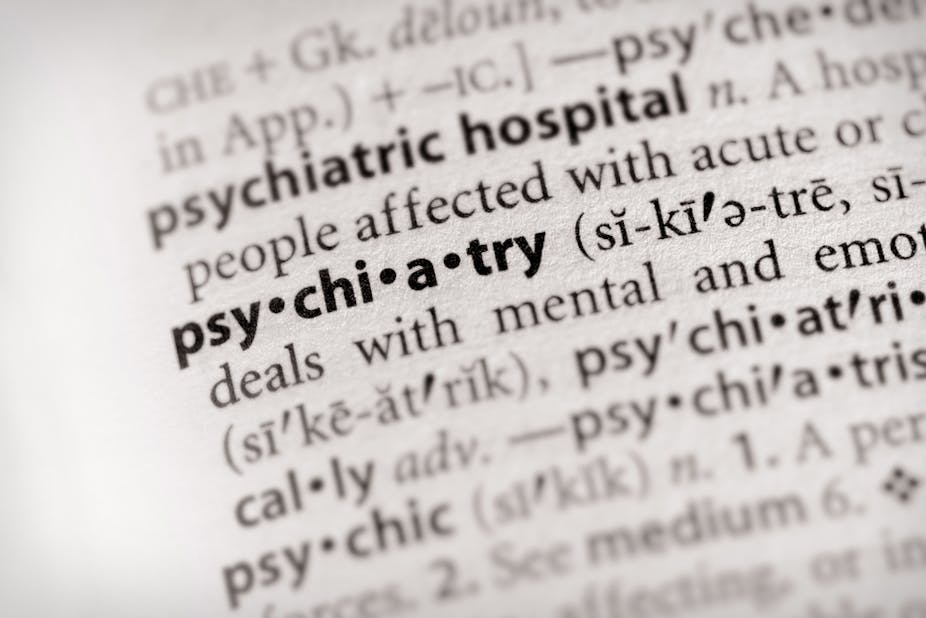Welcome to Matters of the Mind, a series which examines the clinician’s bible for diagnosing mental disorders, the DSM, and the controversy surrounding the forthcoming fifth edition.
The Diagnostic and Statistical Manual of Mental Disorders (DSM) is a publication of the American Psychiatric Association. It was originally published in 1952 to provide a standardised means for making and coding psychiatric diagnoses.
The DSM is currently undergoing its fifth revision, planning for which has been underway since 1999. This process has generated world-wide debate which has escalated as we approach its publication date. The DSM-5 is due to hit psychiatrists’ shelves in May 2013.
Why we need a diagnostic manual
Even in this age of brain scans and genetic analysis, we lack the capacity to diagnose psychiatric illness with objective tests. Therefore, psychiatrists rely on the symptoms reported by patients and their own observations to make a diagnosis. Clinicians can compare the patent’s symptoms with the standardised lists of symptoms and criteria contained in diagnostic manuals such as the DSM.
The DSM’s symptom-based criteria have been formulated by expert committees and then tested in studies to see how well they define distinct groups of patients. But clearly, the evidence base for the criteria for any particular disorder will change over time. This necessitates the process of ongoing review and revision of the make-up of the DSM.
The DSM provides an important standardisation of diagnostic categories for psychiatric research and treatment. Prior to the this system, there were substantial variations in the way certain diagnoses were applied. This made clinical diagnosis inconsistent and substantial advances in psychiatric research impossible.
But the DSM has been used more broadly than just by clinicians and researchers. Insurance companies, for instance, can require diagnoses made using specific criteria such as those in the DSM to match to reimbursement categories.
Why the DSM is controversial
The DSM itself states that the application of its diagnostic criteria requires extensive clinical training and judgement to make appropriate diagnoses. But many clinicians argue that the complexity of patients’ presentations cannot be adequately summarised by these limited diagnostic codes.
Another common concern is that the categories don’t reflect natural disease boundaries. Many patients present with symptoms meeting criteria for more than one disorder – there is major overlap between depression and anxiety disorders, for instance. This has considerable potential to undermine research: a new medication may not appear to work in drug trials if it’s being tested in what is actually a mixed group of illnesses, which all fall within one DSM diagnosis.
Despite these controversies, the DSM has been widely used for many years.

The DSM-5: confidentiality and conflicts
At the start of the DSM-5 revision process, [concerns were raised](http://www.ncbi.nlm.nih.gov/pmc/articles/PMC2802599/](http://www.ncbi.nlm.nih.gov/pmc/articles/PMC2802599/) about the manner in which members of the task force were bound by confidentiality agreements from discussing the process.
The potential for conflicts of interest between task force members and the pharmaceutical industry have also been the focus of attention, after it emerged that a greater percentage of task force members had current or previous ties to industry than in past revisions.
In terms of content, many clinicians have been anxious about the proposed changes excessively expanding diagnostic boundaries beyond the support of current evidence. This could, in some cases, “medicalise” normal aspects of human behaviour or experience.
It’s alleged that psychiatrists, and especially those acting in the interests of pharmaceutical companies, are attempting to expand the boundaries of psychiatric diagnosis to expand the potential scope of psychiatric treatment.
In contrast, proponents for the DSM have argued the process was necessary to refine and potentially expand psychiatric diagnoses over time. This reflects a growing understanding of mental illness and ensures treatments are available to those who are suffering. These individuals may not be able to access services, or insurance payments, for treatment if they don’t meet the existing criteria for DSM-defined disorders.
An example of this is the possible inclusion of a new risk syndrome for first psychosis. Criteria have been developed and evaluated in recent years that define a group of individuals who have a relatively high risk – 50% – of developing a DSM-diagnosable psychotic disorder such as schizophrenia.
It has been proposed that this syndrome would provide criteria for the diagnosis for these individuals whose psychotic symptoms aren’t sufficient to meet criteria for schizophrenia.
This is potentially problematic if it results in the treatment of individuals who would not develop these psychotic illnesses with interventions or medications that come with significant side-effects. However, if the criteria are applied to individuals who are actually suffering and seeking help, it will facilitate access to treatment that may otherwise be denied.
Far-reaching consequences
The revision of the DSM has substantive implications well beyond the narrow scope of psychiatric practice. It influences how as a society we view and define normal and abnormal behaviour as well as how we finance and reimburse medical care and compensation.
As there are many groups with a substantial interest in its content, we are unlikely to ever achieve perfect consensus. However, we must hope that the coming version is being developed with these broad interests and implications in mind.
This is the first part of our series Matters of the Mind. To read the other instalments, follow the links below:
Part two: Forget talking, just fill a script: how modern psychiatry lost its mind
Part three: Strange or just plain weird? Cultural variation in mental illness
Part four: Don’t pull your hair out over trichotillomania
Part five: When stuff gets in the way of life: hoarding and the DSM-5
Part six: Psychiatric labels and kids: benefits, side-effects and confusion
Part seven: Redefining autism in the DSM-5
Part eight: Depression, drugs and the DSM: a tale of self-interest and public outrage
Part nine: Why prolonged grief should be listed as a mental disorder)

